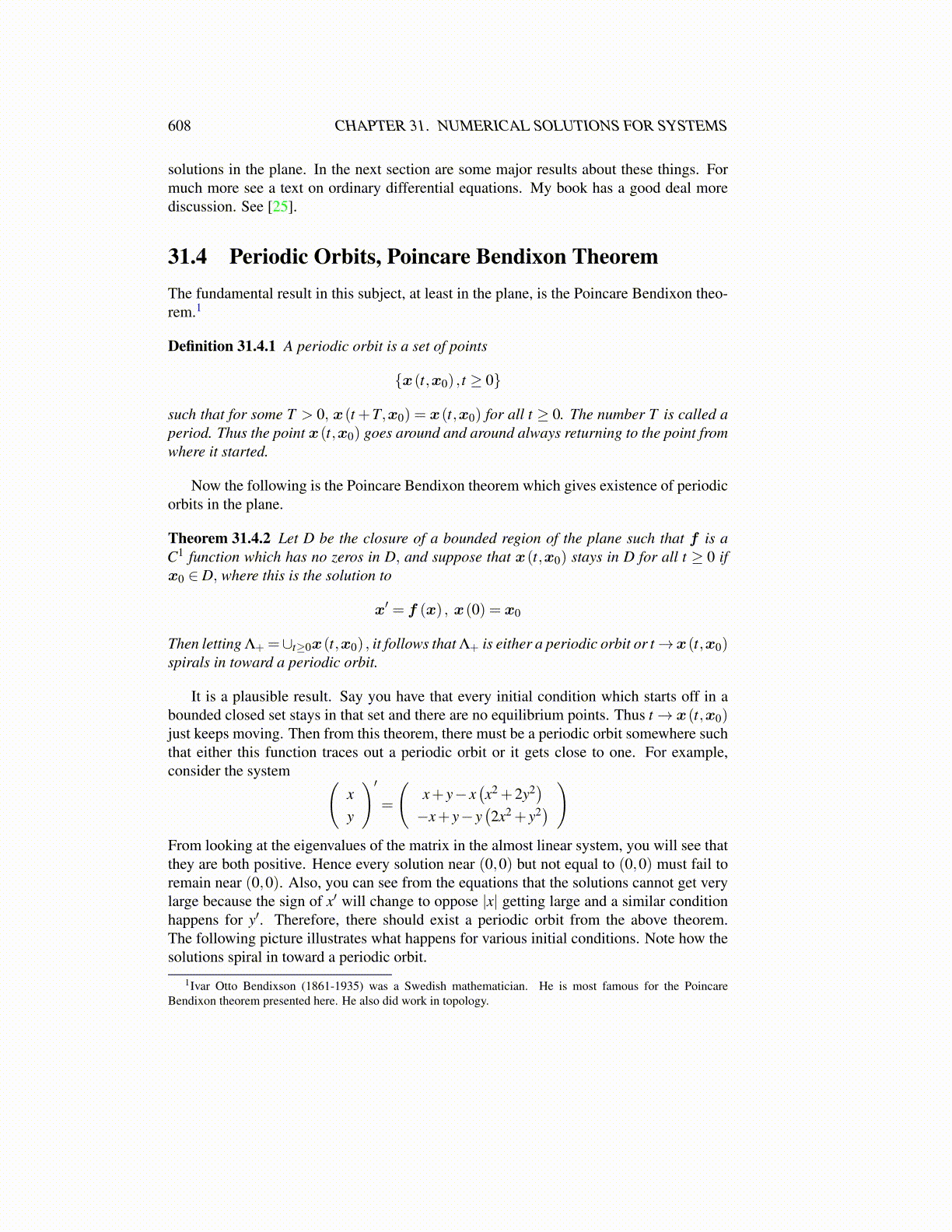
608 CHAPTER 31. NUMERICAL SOLUTIONS FOR SYSTEMS
solutions in the plane. In the next section are some major results about these things. Formuch more see a text on ordinary differential equations. My book has a good deal morediscussion. See [25].
31.4 Periodic Orbits, Poincare Bendixon TheoremThe fundamental result in this subject, at least in the plane, is the Poincare Bendixon theo-rem.1
Definition 31.4.1 A periodic orbit is a set of points
{x(t,x0) , t ≥ 0}
such that for some T > 0, x(t +T,x0) = x(t,x0) for all t ≥ 0. The number T is called aperiod. Thus the point x(t,x0) goes around and around always returning to the point fromwhere it started.
Now the following is the Poincare Bendixon theorem which gives existence of periodicorbits in the plane.
Theorem 31.4.2 Let D be the closure of a bounded region of the plane such that f is aC1 function which has no zeros in D, and suppose that x(t,x0) stays in D for all t ≥ 0 ifx0 ∈ D, where this is the solution to
x′ = f (x) , x(0) = x0
Then letting Λ+ =∪t≥0x(t,x0) , it follows that Λ+ is either a periodic orbit or t→x(t,x0)spirals in toward a periodic orbit.
It is a plausible result. Say you have that every initial condition which starts off in abounded closed set stays in that set and there are no equilibrium points. Thus t→ x(t,x0)just keeps moving. Then from this theorem, there must be a periodic orbit somewhere suchthat either this function traces out a periodic orbit or it gets close to one. For example,consider the system (
xy
)′=
(x+ y− x
(x2 +2y2
)−x+ y− y
(2x2 + y2
) )From looking at the eigenvalues of the matrix in the almost linear system, you will see thatthey are both positive. Hence every solution near (0,0) but not equal to (0,0) must fail toremain near (0,0). Also, you can see from the equations that the solutions cannot get verylarge because the sign of x′ will change to oppose |x| getting large and a similar conditionhappens for y′. Therefore, there should exist a periodic orbit from the above theorem.The following picture illustrates what happens for various initial conditions. Note how thesolutions spiral in toward a periodic orbit.
1Ivar Otto Bendixson (1861-1935) was a Swedish mathematician. He is most famous for the PoincareBendixon theorem presented here. He also did work in topology.